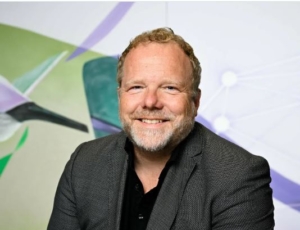What end goals did you have in mind at the start of this research? Have these end goals changed since you started?
My goal is to write a textbook and develop related teaching materials on Mendelian randomization, though from the beginning I knew it was not feasible to write an entire textbook in my three months at the NIAS. This broad end goal has not changed, but I have had many new ideas that have shifted how I thought I would organize the book and what specific content to highlight. I have also been inspired to think more deeply about the direction I want my research to take, beyond this focus on education.
What does an average day look like for you at NIAS?
I have really enjoyed having dedicated time to reading and writing all day. In particular, I have really enjoyed access to the books from our NIAS library and reading older texts on causal inference ideas – this has been a luxury of having this time reserved for thoughtful science. Of course, one of the nicest features of my days at NIAS is lunch with the other fellows. Speaking with smart, interesting people outside of my field has been a very stimulating and rewarding experience.
What got you started in the field of epidemiology?
My bachelor’s degrees were in both mathematics and psychology, and I knew at that early age that I wanted to use my quantitative skills to help people but did not know how to do that within one specific field at the time. The more I learned about epidemiology and public health, the more natural of a fit it seemed. Epidemiologists work to empirically inform decisions that affect all of us – so, by appropriately and carefully analysing data and flexing my quantitative muscles, I could potentially have a meaningful impact on people and populations.
Under what conditions are normal randomization trials not feasible?
Randomized trials are an amazing tool for informing decisions – like whether to recommend a certain medication, for example – but there are lots of questions for which a randomized trial is too costly, not timely enough, or unethical. For example, we often think it is unethical to randomize pregnant women to different medications because her offspring is unable to consent. It is also not practical or timely enough to conduct a randomized trial to study the long-term effects of a treatment, because waiting decades for the results of that trial means we cannot inform decisions about using that treatment to patients today. Finally, trials can be very expensive to conduct, and so they are often conducted in very select patient groups like patients with a very high risk of the outcome. While it is still useful to restrict high-risk patients for a trial, it means that we do not have trials conducted in other types of people and patients, and therefore do not have easy answers to how a treatment may affect these other populations.
When you say observational studies in the description of the upcoming seminar, what do you mean by observational?
Observational studies simply mean that we did not conduct an active experiment or randomization – we have data on people that we “observe” but we do not instruct them to do anything different in how they live their lives. This could mean we have access to passively collected data, like their medical records, for example. It could also mean that we have asked them to fill out questionnaires or conducted some sort of medical examination. Such data is more and more available, and offers lots of opportunities for research.
How would you explain Mendelian randomization to a layman?
Mendelian randomization is the concept that we can leverage the “natural experiment” of our inherited genes to study the effects of exposures or behaviours we care about. Suppose, for example, you want to know whether drinking milk makes people stronger or healthier. Comparing kids or adults who do and do not drink milk may not easily answer this question, because people who drink milk may also exercise more or eat less fatty foods. But, by chance, some of us inherit a version of a gene that makes us “lactose intolerant” and therefore we rarely drink milk, while some of us inherit a version of that gene that lets us drink as much milk as we want. By comparing people with different versions of this gene and seeing which group is stronger or healthier, we may be able to learn about drinking milk. Of course there is no reason this is just about milk, since our genetics affects many other exposures or behaviours in our lives, and indeed Mendelian randomization studies have been conducted to study the effects of everything from educational attainment to cholesterol levels. Using these principles to study causal effects is what Mendelian randomization is all about. My work focuses on both the promise of this method – how great it is that we can potentially answer these types of questions – alongside a more nuanced understanding of when the method works well and how to evaluate the strengths and limitations of the method on a case-by-case basis.
What effect do you think a standardised textbook for this method is going to have on the field of epidemiology?
My hope is that the textbook’s biggest effect goes beyond my own field’s academic circles and reaches anyone who has to reason about decisions based on the health science literature. For example, if a clinician or a policy-maker reads a Mendelian randomization study, will they know how to evaluate it critically to inform decisions for their patients or communities? Having a resource that includes rigorous yet accessible chapters to this wider audience is an important means to make sure the results of these types of studies are used well.
How did you come across NIAS?
I first learned about NIAS through learning about my particular fellowship – the L’Oréal-UNESCO For Women in Science fellowship. I have previously been exposed to the Radcliffe Institute for Advanced Study in Cambridge, and so knew what a special place such an Institute could be for an academic. Applying for the fellowship was then an easy decision.
What do you value about NIAS so far?
NIAS gave me both the space for creative, deep thought, and a diverse group of colleagues to connect with on a daily basis. What more can an academic want?
Have you had any noteworthy experiences at NIAS or Amsterdam in general?
Part of my fellowship included support for organizing a small workshop with the leading epidemiologists and statisticians working on Mendelian randomization and related methods. The two days I spent with these people in the NIAS attic conference room really challenged me to think more clearly about the future of my field and, importantly, how I personally can shape that future.



